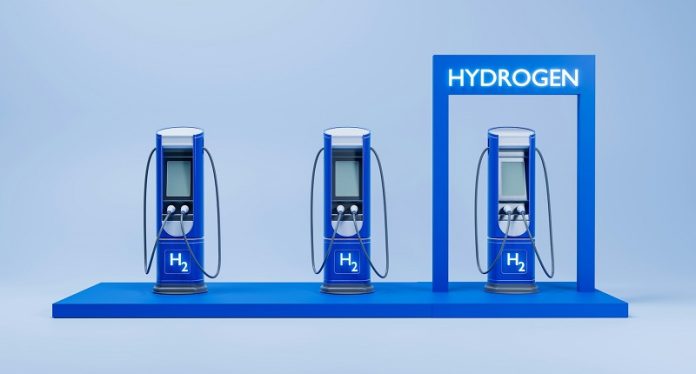
Scientists from Switzerland’s EPFL and Japan’s Kyoto University have developed a new type of liquid that could transform how hydrogen is stored and transported—making it much easier, safer, and more practical to use as a clean fuel.
Hydrogen is often called the fuel of the future because it produces only water when burned. But there’s a big challenge: hydrogen is hard to store and move around.
Normally, hydrogen-rich materials are solids at room temperature or only become liquids under extreme conditions like very high pressure or freezing cold temperatures.
This makes transportation expensive and complicated.
One solid compound, called ammonia borane, can store a large amount of hydrogen. But it only releases hydrogen gas when it’s heated to high temperatures, and it often produces unwanted byproducts in the process.
Scientists have long searched for a way to turn such solid hydrogen materials into liquids that stay stable and easy to handle at room temperature.
Now, researchers may have found a solution. They created a new liquid by mixing two chemicals: ammonia borane and tetrabutylammonium borohydride.
The result is a clear, stable liquid that contains up to 6.9% hydrogen by weight—an amount that meets and even surpasses the U.S. Department of Energy’s 2025 targets for hydrogen storage.
This new liquid is part of a class of materials called deep eutectic solvents (DESs), which are special mixtures that melt at much lower temperatures than their individual components. What makes this DES unique is that it’s the first one to include a hydrogen-rich material known as a hydride, opening new doors for storing more hydrogen in liquid form.
The team discovered that the right balance between the two ingredients—between 50% and 80% ammonia borane—keeps the mixture in liquid form even when it’s cooled to -50°C. That’s far below any everyday temperature, so the liquid stays stable under normal conditions. Even better, it doesn’t turn back into a solid over time.
Tests showed that the liquid could release pure hydrogen gas at just 60°C, much lower than most other hydrogen storage methods. And since only part of the liquid breaks down during this process, it may even be reused.
Because it doesn’t require high-pressure tanks or super-cold storage, this new liquid could make hydrogen fuel much easier to use in real-life situations, from powering vehicles to storing renewable energy. It could also inspire new liquids for other uses, such as green manufacturing or energy production.
The research, published in Advanced Materials, brings us one step closer to using hydrogen safely and efficiently in our daily lives.
Source: KSR.



